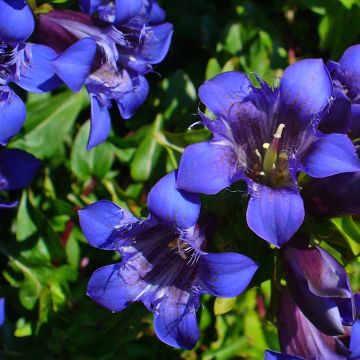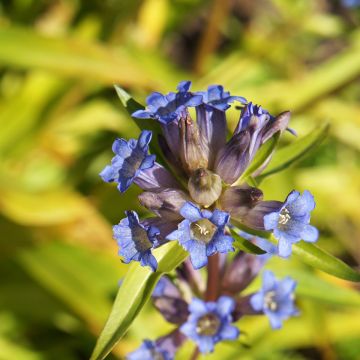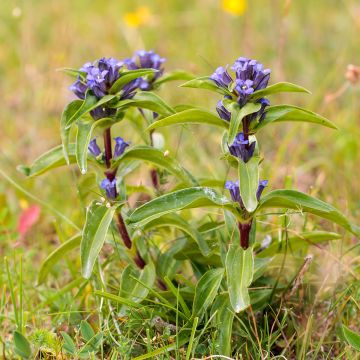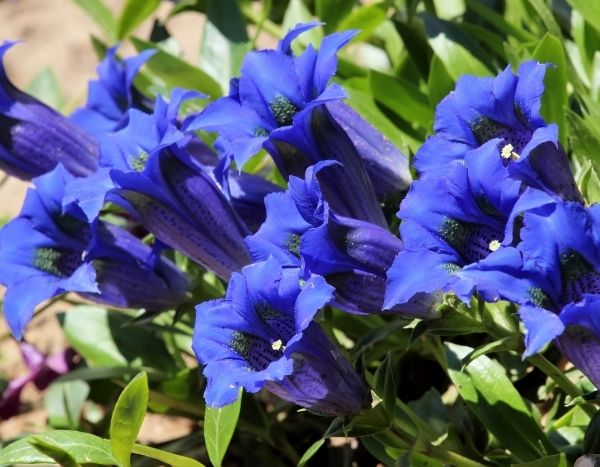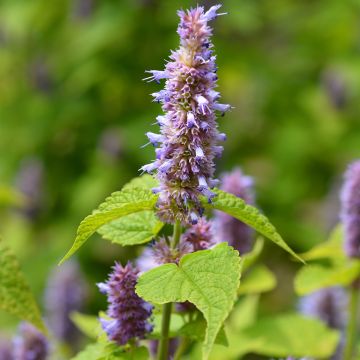

Gentiana asclepiadea


Gentiana asclepiadea


Gentiana asclepiadea


Gentiana asclepiadea


Gentiana asclepiadea
Gentiana asclepiadea
Gentiana asclepiadea
Willow Gentian
Tiny but thriving naked young plant!
Philippe, 16/04/2022
Special offer!
Receive a €20 voucher for any order over €90 (excluding delivery costs, credit notes, and plastic-free options)!
1- Add your favorite plants to your cart.
2- Once you have reached €90, confirm your order (you can even choose the delivery date!).
3- As soon as your order is shipped, you will receive an email containing your voucher code, valid for 3 months (90 days).
Your voucher is unique and can only be used once, for any order with a minimum value of €20, excluding delivery costs.
Can be combined with other current offers, non-divisible and non-refundable.
Home or relay delivery (depending on size and destination)
Schedule delivery date,
and select date in basket
This plant carries a 12 months recovery warranty
More information
We guarantee the quality of our plants for a full growing cycle, and will replace at our expense any plant that fails to recover under normal climatic and planting conditions.

Would this plant suit my garden?
Set up your Plantfit profile →
Description
Gentiana asclepiadea is a stemless perennial herbaceous plant of medium size, an emblem of the Alps. It is regarded as a botanical jewel due to its incredible summer flowering in beautiful intense blue trumpets.
Gentiana asclepiadea belongs to the Gentianaceae family, which includes no less than 400 species, including its famous cousin the stemless gentian, with which it shares its rosette foliage and trumpet-shaped flowering of an unforgettable and incredible colour. However, Gentiana asclepiadea occupies larger mountainous areas (woods, meadows, and pastures) that cover southern and central Europe. It finds there the necessary conditions for its subsistence: very light shade, as it fears the cold, and soil that is at once permeable, moist, and humus-bearing. This perennial is therefore a little demanding. To guarantee and succeed in its cultivation, which requires patience, you will need to ensure the quality of the soil beforehand, even if it means amending it, as well as choosing a suitable exposure, and protecting it from its enemies (snails and slugs).
Another difference from the stemless gentian is its size! While the former is low-growing and mat-forming, the latter is tall. It forms an upright clump that can reach 50 cm (20in)! It can thus constitute an interesting structural plant in the background or at the heart of a flower bed. It also has long and sturdy stems that bear lanceolate matte green leaves with 5 veins arranged in a rosette. Gentiana asclepiadea also makes a precious accent plant. Its flowering, which occurs in July, August, September and sometimes October, is distinguished not only by its blue colour but also by the complexity and feminine delicacy of its flower, about 4 cm (2in) in size, with a tubular bell-shaped corolla, naked and pleated at the throat, which can appear in pairs in the axil of the foliage.
We recommend combining Gentiana asclepiadea with shrubs, perennials, and grasses in cold and dark-colours, to create contrast and make its blue colour resonate. Position a Virginia sweetspire 'Henry’s garnett' as a backdrop for its graceful and fragrant white flowering, and as a first white layer add small ferns, sedges, brunnera, and heuchera, as well as a few clumps of ophiopogon. It should be noted that gentian blue is used in microbiology, along with Zhiel's fuchsin, to differentiate bacteria based on their reaction to these two dyes. This usage, due to Koch (the father, along with Pasteur, of our modern vaccines) gave its name to the most famous of its cousins: Koch's gentian.
Gentiana asclepiadea in pictures






Flowering
Foliage
Plant habit
Botanical data
Gentiana
asclepiadea
Gentianaceae
Willow Gentian
Alps
Other Gentian
View all →Planting and care
Gentiana asclepiadea is a slightly demanding perennial. You will first need to ensure the quality of the soil: a well-draining soil enriched with organic matter that retains some moisture in summer but does not become waterlogged in winter. A partially shaded situation is also very important: morning sun is not a problem but make sure it does not endure the hottest hours in direct sunlight. Plant it in a cool rockery under the shade of a beautiful bush, choosing a location where the morning moisture seems more significant.
Planting period
Intended location
Care
Planting & care advice
-
, onOrder confirmed
Reply from on Promesse de fleurs
Similar products
Haven't found what you were looking for?
Hardiness is the lowest winter temperature a plant can endure without suffering serious damage or even dying. However, hardiness is affected by location (a sheltered area, such as a patio), protection (winter cover) and soil type (hardiness is improved by well-drained soil).

Photo Sharing Terms & Conditions
In order to encourage gardeners to interact and share their experiences, Promesse de fleurs offers various media enabling content to be uploaded onto its Site - in particular via the ‘Photo sharing’ module.
The User agrees to refrain from:
- Posting any content that is illegal, prejudicial, insulting, racist, inciteful to hatred, revisionist, contrary to public decency, that infringes on privacy or on the privacy rights of third parties, in particular the publicity rights of persons and goods, intellectual property rights, or the right to privacy.
- Submitting content on behalf of a third party;
- Impersonate the identity of a third party and/or publish any personal information about a third party;
In general, the User undertakes to refrain from any unethical behaviour.
All Content (in particular text, comments, files, images, photos, videos, creative works, etc.), which may be subject to property or intellectual property rights, image or other private rights, shall remain the property of the User, subject to the limited rights granted by the terms of the licence granted by Promesse de fleurs as stated below. Users are at liberty to publish or not to publish such Content on the Site, notably via the ‘Photo Sharing’ facility, and accept that this Content shall be made public and freely accessible, notably on the Internet.
Users further acknowledge, undertake to have ,and guarantee that they hold all necessary rights and permissions to publish such material on the Site, in particular with regard to the legislation in force pertaining to any privacy, property, intellectual property, image, or contractual rights, or rights of any other nature. By publishing such Content on the Site, Users acknowledge accepting full liability as publishers of the Content within the meaning of the law, and grant Promesse de fleurs, free of charge, an inclusive, worldwide licence for the said Content for the entire duration of its publication, including all reproduction, representation, up/downloading, displaying, performing, transmission, and storage rights.
Users also grant permission for their name to be linked to the Content and accept that this link may not always be made available.
By engaging in posting material, Users consent to their Content becoming automatically accessible on the Internet, in particular on other sites and/or blogs and/or web pages of the Promesse de fleurs site, including in particular social pages and the Promesse de fleurs catalogue.
Users may secure the removal of entrusted content free of charge by issuing a simple request via our contact form.
The flowering period indicated on our website applies to countries and regions located in USDA zone 8 (France, the United Kingdom, Ireland, the Netherlands, etc.)
It will vary according to where you live:
- In zones 9 to 10 (Italy, Spain, Greece, etc.), flowering will occur about 2 to 4 weeks earlier.
- In zones 6 to 7 (Germany, Poland, Slovenia, and lower mountainous regions), flowering will be delayed by 2 to 3 weeks.
- In zone 5 (Central Europe, Scandinavia), blooming will be delayed by 3 to 5 weeks.
In temperate climates, pruning of spring-flowering shrubs (forsythia, spireas, etc.) should be done just after flowering.
Pruning of summer-flowering shrubs (Indian Lilac, Perovskia, etc.) can be done in winter or spring.
In cold regions as well as with frost-sensitive plants, avoid pruning too early when severe frosts may still occur.
The planting period indicated on our website applies to countries and regions located in USDA zone 8 (France, United Kingdom, Ireland, Netherlands).
It will vary according to where you live:
- In Mediterranean zones (Marseille, Madrid, Milan, etc.), autumn and winter are the best planting periods.
- In continental zones (Strasbourg, Munich, Vienna, etc.), delay planting by 2 to 3 weeks in spring and bring it forward by 2 to 4 weeks in autumn.
- In mountainous regions (the Alps, Pyrenees, Carpathians, etc.), it is best to plant in late spring (May-June) or late summer (August-September).
The harvesting period indicated on our website applies to countries and regions in USDA zone 8 (France, England, Ireland, the Netherlands).
In colder areas (Scandinavia, Poland, Austria...) fruit and vegetable harvests are likely to be delayed by 3-4 weeks.
In warmer areas (Italy, Spain, Greece, etc.), harvesting will probably take place earlier, depending on weather conditions.
The sowing periods indicated on our website apply to countries and regions within USDA Zone 8 (France, UK, Ireland, Netherlands).
In colder areas (Scandinavia, Poland, Austria...), delay any outdoor sowing by 3-4 weeks, or sow under glass.
In warmer climes (Italy, Spain, Greece, etc.), bring outdoor sowing forward by a few weeks.


































